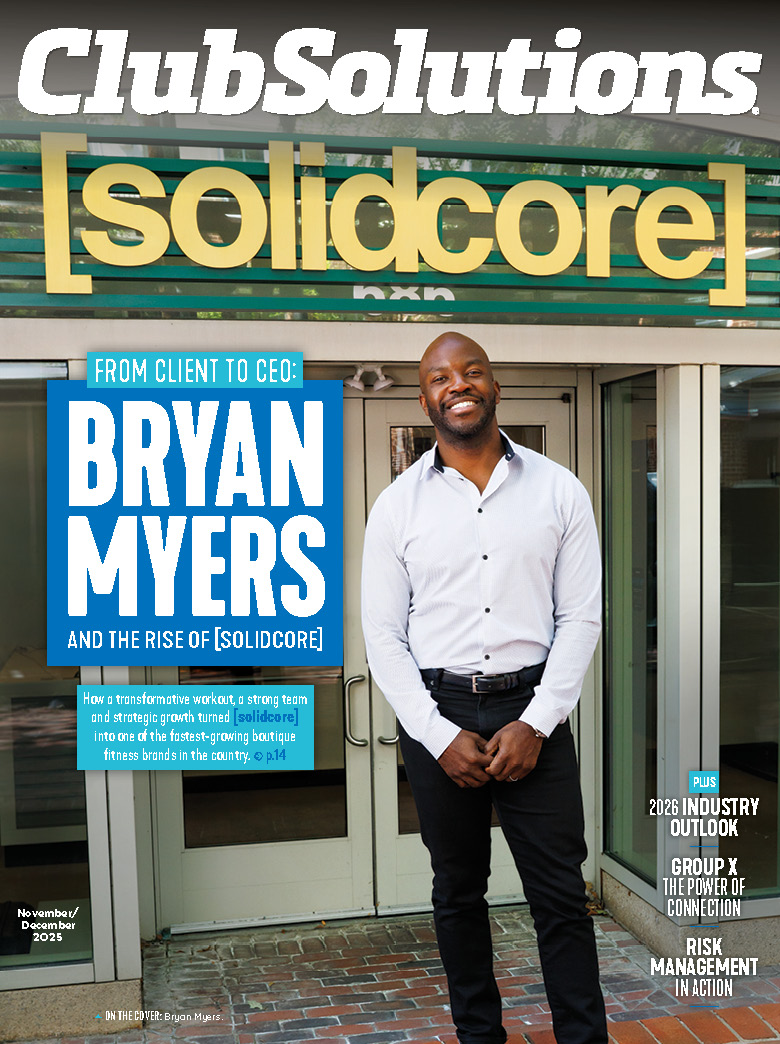Being a previous owner of both a racquet and a health club, I have a unique perspective that includes first-hand knowledge of the financial burdens facing both a dues-driven health club and a program-driven racquet club.
My racquet club had a yearly membership that accounted for approximately 25 percent of its yearly revenue. The remaining income was generated from programming and court rentals. The health club, on the other hand, was a $36-per-month facility that was heavily reliant on its monthly dues and pre-paid memberships, which accounted for 80 percent of its total revenue.
Unfortunately, unlike the peanut-butter-wielding guy and his chocolate-loving counterpart, I couldn’t just bump the two polar opposites together and make the industries equivalent of the Reese®’s Peanut Butter Cup. I needed to use what I could from each facility to help the other tighten up its disproportionate revenue numbers.
The tennis club, which would always be highly dependant on programming and court rentals, needed to use the monthly reoccurring billing model to stay competitive. Getting a member to pay $95 per month was an easier sell than asking them to come up with $1,140 in advance. The income generated from each member didn’t increase, but the pool of possible players did grow. The percentage of income from memberships versus income from programming didn’t change, but the increased revenue realized from higher membership numbers was a direct response to the “health club-ification” of the tennis facility.
Conversely, how could tennis help the health club increase its non-dues revenue? Not only did we need to make it easier for members to spend money after they joined, we needed to change the culture of the health club.
First, we needed to create a “country club” atmosphere, where a member didn’t need to have money with them to purchase goods and services. We offered three ways that a member could get a smoothie, an energy bar or any other product we sold.
The Pre-Paid Method: Members would put money into their account and charge against it every time they bought something. I gave my members $115 in credit for every $100 they pre-paid.
The Add to My EFT Method: I allowed members to charge any product to their account, and it would automatically be added to their next month’s EFT. Even though you are giving the members products and services now, and not getting paid until the next EFT, it creates an easy and free-flowing process that produces greater sales. A bottle of water a day doesn’t seem like a lot, but a year and 250 bottles of water later, and your non-dues revenue for that member has added up.
The Check, the Invoice and Pay Method: Members were able to go online to their personal Member’s Portal and see all their house charges for the past month. If they wanted to, they could pay for their house charges online before we ran their EFT.
Some clubs, in an effort to be more cautious, have given members house charging privileges only after they have been a member in good standing, with no returned EFTs, for a certain time frame.
What clubs quickly realize is that members who are set up for house charging are not only more likely to spend more, but are more likely to try new products or services. No cash on hand very often equates to no perceived cost associated with the purchase, and paying by EFT very often means, “out of sight, out of mind.”
Every club has its own identity and business model, and the percentage of revenue generated from dues compared to non-dues is just as unique as the club. The lesson learned from owning both a tennis club and a health club is that perpetual growth, and increased revenue, is directly tied by moving the percentage more towards the middle.
Eric Claman owned two clubs in Torrington, Connecticut, before selling both and accepting a consulting job at Twin Oaks Software Development in 2011. He can be reached at 866.278.6750 or at eclaman@tosd.com, or visit healthclubsoftware.com.
Stay ahead in the fitness industry with exclusive updates!
Eric Claman
Eric Claman owned two clubs in Torrington, Connecticut, before selling both and accepting a consulting job at Twin Oaks Software Development in 2011. He can be reached at 866.278.6750 or at eclaman@tosd.com, or visit healthclubsoftware.com.



![From Client to CEO: Bryan Myers and the Rise of [solidcore]](https://d296qbqev3kq48.cloudfront.net/wp-content/uploads/2025/11/06151333/CS-NovDec25-CoverStory-3-350x250.jpg)







Taking away the pain of purchase is a sure fire way to increase revenues!
In our personal training business we post bill all of our clients that way the only thing the trainer has to focus on is booking the clients for sessions and helping them reach their goals! Not being the sales person!
It is great when you have a software that can handle “running a tab” for the clients all month long and then bill them with the click of a button!
We use myVolo